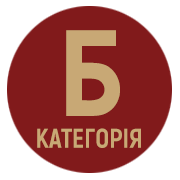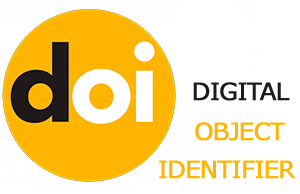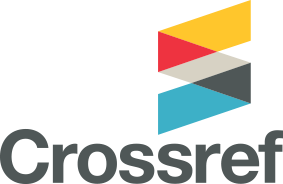TEACHING WRITING: PRODUCT VS PROCESS
DOI:
https://doi.org/10.32782/apv/2025.4.4Keywords:
EFL, ELT, writing skills, teaching writing, writing as product, writing as processAbstract
In English as a Foreign Language (EFL) teaching, writing occupies a central place alongside reading, listening, and speaking, yet it is often underestimated in practice. For Ukrainian students, achieving at least the B2 level of proficiency, as defined by the Common European Framework of Reference for Languages, requires not only the ability to understand and produce oral discourse but also to create coherent written texts that demonstrate clarity of thought, logical structure, and appropriate register. However, teaching practice shows that many students struggle with writing: they cannot sufficiently develop and support ideas, lack skills in organizing paragraphs, confuse formal and informal styles, and are not always aware of ethical principles in using sources. These deficiencies point to the necessity of teaching writing not as a mere product but as a complex process that integrates several stages: pre-writing, drafting, revising, editing, and producing the final text. Writing as a process encourages students to analyze rhetorical situations, define the purpose of communication, consider the expectations of the target audience, and select strategies for effective argumentation. It also highlights the importance of academic integrity, paraphrasing, and citation practices that help avoid plagiarism. The process-oriented approach thus shifts the focus from imitation of model texts to the development of independent writing competence, supported by brainstorming, outlining, peer review, and feedback mechanisms. The article argues that systematic instruction in writing contributes to building student confidence, enhances their ability to engage in academic and professional communication, and ensures readiness for further study or participation in international exchange programs. Writing, therefore, must be deliberately taught, carefully practiced, and consistently assessed with transparent criteria that emphasize both content and form.
References
Білан Н. М. Роль письма на заняттях з іноземної мови // Матеріали ІІІ Міжнародної наукової інтернет-конференції «Сучасний соціокультурний простір 2016». 2016. Режим доступу: http://int-konf.org
Тарнопольський О. Б., Кожушко С. П. Методика навчання студентів вищих навчальних закладів письма англійською мовою. Вінниця : Нова книга, 2008. 288 с.
Чернобривець Л. Формування навичок письма шляхом використання новітніх інформаційних технологій на середньому етапі навчання англійської мови. 2018. Режим доступу: http://11.ucoz.ua/blog
Babin M., Burnell C., Pesznecker S., Rosevear N., Wood J. The Word on College Reading and Writing. Open Oregon Educational Resources, 2017. Режим доступу: https://openoregon.pressbooks.pub/wrd/
Bayraktar A. Teaching writing through teacher–student writing conferences // Procedia – Social and Behavioral Sciences. 2012. Vol. 51. P. 709–713. DOI: 10.1016/j.sbspro.2012.08.229
Blakeslee S. The CRAAP Test // LOEX Quarterly. 2004. Vol. 31, № 3. Режим доступу: https://commons.emich.edu/loexquarterly/vol31/iss3/4/
Brown H. D. Teaching by Principles: An Interactive Approach to Language Pedagogy. 2nd ed. Longman, 2000. 491 p.
Council of Europe. Common European Framework of Reference for Languages: Learning, Teaching, Assessment. Cambridge : Cambridge University Press, 2001. 273 p.
Dragomir I. A., Niculescu B.-O. Different Approaches to Developing Writing Skills // Land Forces Academy Review. 2020. Vol. 25, № 3(99). P. 201–206. DOI: 10.2478/raft-2020-0024
Gagich M., Zickel E. A Guide to Rhetoric, Genre, and Success in First-Year Writing. Cleveland : MSL Academic Endeavors, 2018. Режим доступу: https://pressbooks.ulib.csuohio.edu/csu-fyw-rhetoric/
Ferris D. R., Hedgcock J. Teaching L2 Composition: Purpose, Process, and Practice. 3rd ed. New York : Routledge, 2013. 456 p.
Harmer J. The Practice of English Language Teaching. 4th ed. London ; New York : Pearson Longman, 2007. 448 p.
Harris M. Teaching One-to-One: The Writing Conference. Urbana : National Council of Teachers of English, 1986. 190 p.
Hopkins H., Reid S., Kowalski D. Developing Your Ideas. The WAC Clearinghouse, 2022. Режим доступу: https://wac.colostate.edu/repository/writing/guides/guide/index.cfm?guideid=27
Mott-Smith J. A., Tomaš Z., Kostka I. Teaching Writing. Revised ed. Alexandria : TESOL Press, 2020. 80 p.
Murray D. Teach Writing as a Process Not Product // The Leaflet. 1972. Vol. 71, № 3. P. 11–14. Режим доступу: https://oira.aua.am/wp-content/uploads/2020/02/Teach-Writing-as-a-Process-Not-Product.pdf
Reid S., Kowalski D. Developing Your Ideas. The WAC Clearinghouse, 2021. Режим доступу: https://wac.colostate.edu/resources/writing/guides/ideas
Scrivener J. Learning Teaching: The Essential Guide to English Language Teaching. 3rd ed. Oxford : Macmillan Education, 2011. 418 p.
Tsapro H. Teachers’ ChatGPT vs Students’ ChatGPT: A Classroom Battle of Wits // Zrostaiemo razom – vykladannia z viroiu ta stiikistiu: materialy 27-i Mizhnarodnoi naukovo-praktychnoi konferentsii. Ivano-Frankivsk, 2025. P. 221–223.








